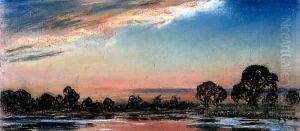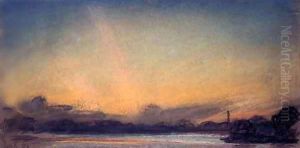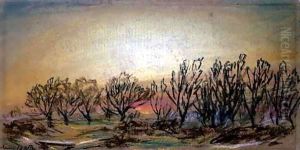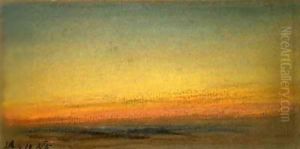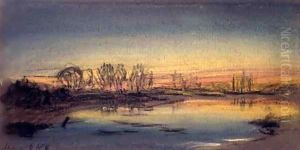William Ascroft Paintings
William Ascroft was an English artist known for his pastel drawings and watercolors, especially his detailed depictions of natural phenomena and landscapes. Born in 1832, Ascroft lived during a period of significant change in both the arts and sciences. He was particularly interested in atmospheric and meteorological conditions, which is reflected in much of his work.
Ascroft's most notable contributions to art are his series of pastel drawings that document the dramatic and vivid sunsets caused by the eruption of Krakatoa in 1883. The volcanic eruption in Indonesia had a global impact on the skies, creating striking sunsets with unusual colors due to the spread of volcanic ash in the atmosphere. These sunsets captured the public imagination and Ascroft's drawings became valuable records of these ephemeral events. He would often create these works on-site, capturing the changing skies from the banks of the River Thames and other locations in England.
Aside from his Krakatoa series, Ascroft was proficient in capturing the British countryside and urban scenes. His works are known for their atmospheric quality and sensitivity to changing light conditions. However, despite his contributions to capturing these natural events, Ascroft did not gain the same level of fame as some of his contemporaries. He was, nevertheless, a respected artist in his field and participated in exhibitions during his lifetime.
William Ascroft's interest in atmospheric effects also aligned with the work of scientists who were studying meteorology and the optical effects of the atmosphere. His artworks provided visual evidence of these phenomena and were of interest not only to art lovers but also to the scientific community of the time.
Ascroft passed away in 1914, leaving behind a body of work that continues to be of interest for its artistic merit as well as its intersection with the scientific understanding of atmospheric phenomena. His works remain a testament to the beauty of natural events and the ability of art to document and interpret the world around us.
